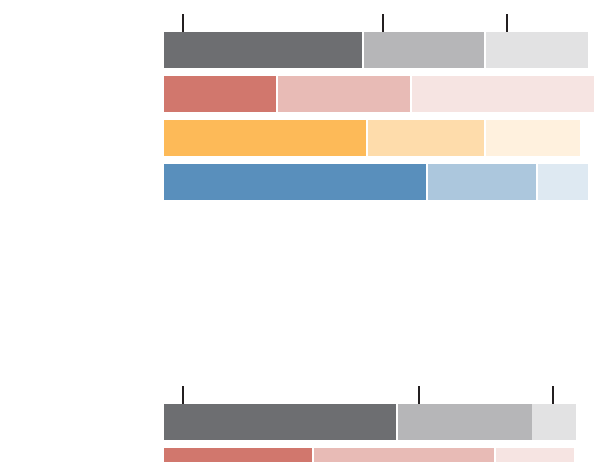The ‘Limits to Growth’ report, originally published in 1972 by the Club of Rome, sparked a fervent and critical debate about the sustainability of human economic activities in relation to planetary ecosystems. As the world continues to grapple with the consequences of climate change and environmental degradation, there is a pressing question: Did the update to “Limits to Growth,” released decades later, adequately address the imperatives of global warming? This inquiry transcends the mere acknowledgment of a severely anthropogenic climate crisis; it probes into the underlying theoretical frameworks that govern our understanding of economic growth, resource depletion, and ecological viability.
To contextualize this discussion, it is essential to revisit the central tenets of the original ‘Limits to Growth’ model. Prophesying dire scenarios stemming from unbridled population growth and resource consumption, the report employed systems dynamics to illustrate the interdependencies between economic development, environmental constraints, and human well-being. It posited that without substantive alterations to our developmental paradigms, humanity faced imminent socio-economic collapse due to resource depletion and ecological incapacitation. Such predictions fostered a keen awareness of resource limitations, arguably laying the groundwork for future environmental policymaking.
The reexamination of these ideas in subsequent updates, particularly the 2004 and 2012 versions, breathed new life into discussions surrounding sustainability, yet the question remains whether these updates sufficiently encompassed the gravity and nuances of global warming. One significant aspect is the integration of climate change models and their predictive capacities regarding future temperature increases, extreme weather events, and alterations to biodiversity. Did the updates adequately assimilate the scientific advancements that emerged around climate modeling and the ramifications of greenhouse gas emissions?
A notable observation is that the revisions to ‘Limits to Growth’ largely reiterate the findings of the original report, emphasizing resource depletion and ecological overshoot, albeit with enhanced data and technological intonations. Yet, a critical element concerning anthropogenic climate change—namely, the role of industrial activities in exacerbating global warming—was arguably understated. As empirical models have become more sophisticated over the years, there has been a growing consensus around the notion that the economic mechanisms fueling growth are deeply intertwined with fossil fuel dependency and high carbon emissions.
Moreover, pivotal theories, such as the Environmental Kuznets Curve, which posits that economic growth initially leads to environmental degradation, followed by a subsequent decline in emissions and environmental impact, warrant scrutiny. While this theory provides a certain optimism regarding the potential for decoupling economic growth from environmental harm, it is predicated on the assumption of continuous technological advancements and regulatory frameworks. The updates must reflect the realities we face; technological innovations have yet to keep pace with the rapid climatic shifts and persistent carbon output resulting from industrialization.
Lurking beneath this technical discourse is a recognition of the ethical implications tied to climate change discussions. The updates to ‘Limits to Growth’ present an implicit call for a shift in societal values towards sustainability, yet they must also contend with the stark inequalities that have perpetuated environmental injustice. Vulnerable populations bear the brunt of climate impacts, despite contributing the least to greenhouse gas emissions. This elucidates the intertwined complexities of economics and ethics that require thorough exploration in any holistic address of climate challenges.
Furthermore, the phenomenon of climate change is fundamentally a temporal issue. Current projections show that immediate action is imperative to curtail the impending catastrophic effects of unabated global warming. The updates thus hold a responsibility to incorporate robust analyses of timelines and plausible scenarios, examining how delayed interventions exacerbate risks. The concept of tipping points, or critical thresholds in climate systems beyond which recovery becomes improbable, must be central to the dialogue. Consequently, any rigorous update to ‘Limits to Growth’ should also serve as a clarion call for accelerated action among policymakers and advocates alike.
A cardinal feature of addressing global warming within the context of ‘Limits to Growth’ entails acknowledging the multi-dimensionality of the crisis. This extends beyond a reductionist view, wherein economic growth is seen as the sole factor; instead, it requires a systemic approach that integrates ecological, social, and technological dimensions. Understanding the synergistic relationships among these aspects can lead us toward an equitable transition that allows for both improved human well-being and ecological resilience. Sustainable development practices that are predicated on principles of circularity and renewable resources have become essential in mitigating climate risks.
Moreover, it brings to light the urgency of global cooperation and governance. Climate change does not adhere to geopolitical boundaries; thus, its mitigation necessitates collective action transcending national interests. The updates to ‘Limits to Growth’ must advocate for collaborative frameworks that foster transparency, shared resources, and equitable risk-sharing among nations. This also includes integrating indigenous knowledge and practices that have thrived in synergy with natural ecosystems for millennia, providing invaluable insights into sustainable living.
In conclusion, the updates to ‘Limits to Growth’ harbor a foundational insight into the complex nexus of economic activity and ecological sustainability. However, the issue of global warming, with its profound implications for humanity’s future, demands a more nuanced treatment. By incorporating a robust understanding of climate science, emphasizing ethical dimensions, recognizing the urgency for immediate action, and promoting holistic approaches to sustainability, we can better navigate the challenges posed by this existential crisis. The time for transformative thinking in relation to growth and environmental sustainability is not merely beneficial; it is imperative for the survival of our planet and future generations.






